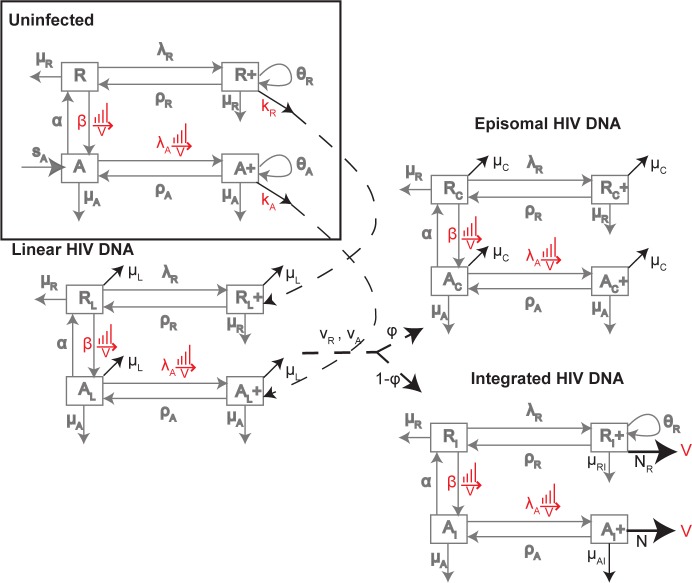Fig 2. Uninfected Homeostasis: Mechanisms controlling resting non-dividing R and dividing R+, activated non-dividing A and dividing A+ memory CD4+ T cells numbers.
Dividing cells R+, A+ arise at rates λR, λA and can go through several rounds of proliferation giving rise to θR and θA copies, which can then revert to non-dividing states at rates ρR, ρA. Activated non-dividing cells arise from activated naïve cells at rate sA and from activation of resting, non-dividing cells R at rate β. Activated non-dividing cells revert to a resting state at rate α. Resting and activated cells die at rates μR, μA. HIV DNA infection of memory CD4+ T cells: The model duplicates the uninfected network for each of the cells containing linear, episomal and integrated HIV DNA. Modifications to the uninfected network to describe dynamics of HIV are highlighted in black. Infection of the uninfected subsets leads initially to cells with linear HIV DNA (subscript L), then either episomal (subscript C) or integrated HIV DNA (subscript I). All parameters are the same across each of these networks. The additional parameters relate to the loss of linear and episomal HIV DNA within cells at rates μL, μC respectively, progression of linear at rate νA, νR in activated and resting cells respectively which convert to episomal HIV DNA with probability ϕ or integrated HIV DNA with probability 1- ϕ, a higher death rate of productively infected cells (AI+) at rate μAI, and the rate of production of virions from these cells N per day. We also assume dividing resting cells with integrated HIV DNA can produce virions at rate NR and die at rate μRI.

